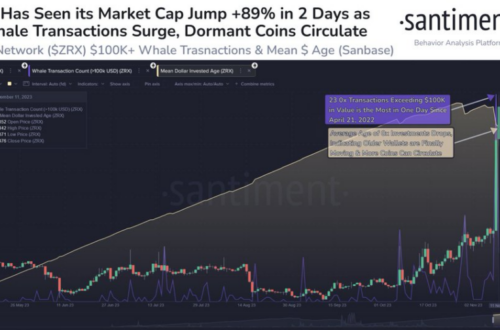Before the merge that saw Ethereum transition to a proof-of-stake consensus mechanism, Ethereum initially employed the proof-of-work (PoW) mechanism. So, What is proof-of-work Ethereum? Following the launch of the Ethereum Merge, some miners chose to stick around and back the proof-of-work consensus. As a result, a new fork of Ethereum was created, and the Ethereum proof-of-work (ETHW) mainnet was launched. The Ethereum PoW blockchain maintains the proof-of-work consensus prior to the merge.
Here’s a look at the PoW mechanism and how the ETHW blockchain uses it.
What is PoW?
Decentralization was a key component of the original cryptocurrency vision. To make that happen, a method of confirming transactions independent of financial institutions was required. The first solution to this problem was the development of a system that enables consensus among all the computers of the crypto network to concur on which transactions were valid. This system was called proof-of-work (PoW).
Proof-of-work (PoW) is a cryptographic consensus mechanism used to ensure the validity of digital transactions. The algorithm is used to verify and keep track of the production of new crypto coins that take place on the blockchain. To validate and record cryptocurrency transactions, the Proof-of-work consensus mechanism necessitates that network participants put forth an effort to solve highly complex mathematical equations. For these equations to be solved, the network needs a significant amount of processing power, hence the name “proof-of-work.”
Proof-of-work and mining are concepts that are closely connected. PoW’s algorithm determines the rules and difficulty of mining operations on the blockchain. On the other hand, mining is the actual “work.” It is the process of adding legitimate blocks to the chain.
How did Ethereum’s proof-of-work work?
The processing of Ethereum PoW transactions results in blocks. Each block in the proof-of-work Ethereum protocol contains:
Block difficulty: Block difficulty is a metric that is applied to the mining of cryptocurrencies. It measures how difficult it is to solve complex cryptographic equations to create a block. The quantity of miners on the network determines the block difficulty. The greater the number of miners, the more difficult finding the block.
Nonce: Nonce is a method of grouping and arranging transactions on the Ethereum blockchain. Every transaction on the Ethereum PoW algorithm has a nonce. The nonce is the sum of all transactions sent from a particular address. Every transaction from an address is assigned a sequential numbered, starting with 0 for the first transaction. The nonce is required to keep track of multiple transactions from the same address.
mixHash: mixHash is a 128-byte intermediate hash value created by noncewhen Ethereum PoW mining computations are carried out. The network may be subject to an attack similar to a Denial-of-service (DoS) attack if blocks request PoW calculations with false or malicious nonce values. Therefore, the mixHash computes through several intermediate steps to ensure that there is no problem by calculating the proof-of-work.
The work in proof-of-work
Blockchains, open ledgers made up of transactional blocks, are present in every cryptocurrency. Each transactional block of a PoW cryptocurrency has a specific hash. In this case, “the work” is producing a hash that corresponds to the current block’s target hash. To confirm the block, a crypto miner must create a target hash that is less than or equal to the block’s hash. Before the Merge, Ethash was Ethereum’s proof-of-work mining algorithm. Ethash makes finding the nonce for a block a difficult race for miners. As a result, only blocks with valid nonce are added to the ETHW chain.
A miner uses mining equipment that can perform computations quickly as they compete to create a block. The goal is to be the first miner to match the block’s target hash. Achieving this will allow the miner to update the blockchain and earn cryptocurrency rewards. Finding the target hash is challenging, but verifying it is straightforward, which is why proof-of-work in cryptocurrencies works well. The procedure is difficult enough to guard against transaction records being altered. However, once a target hash is located, it’s easy for other miners to verify.
Proof-of-work and Security
The proof-of-work protocol’s high computing resource requirements create a secure cryptocurrency network. The proof-of-work protocol makes it almost impossible to add new blocks that would either delete existing transactions, add fictitious ones, or generate a second chain on the ETHW mainnet. This is because a malicious miner would have to consistently solve the block nonce faster than other miners. A malicious miner would require more than 51% of the network’s computing power to outperform every other miner and produce consistently negative but legitimate blocks. It would take a lot of expensive computing power to complete that amount of “work,” and the energy expended might outweigh the gains.
Proof-of-work Economics
The PoW mechanism is also in charge of issuing new crypto coins into the system and providing incentives for miners who successfully created blocks. Successful block miners would receive newly created Ethereum PoW (ETHW) tokens and a portion of the transaction fees as payment.
Looking for a place to buy Ethereum proof-of-work (ETHW)?
You can purchase Ethereum PoW and a variety of other cryptocurrencies on Swapzone. Swapzone is a non-custodial, fast crypto-to-crypto exchange aggregator that assists users in making informed decisions when trading crypto assets. It gathers information about exchange providers, provides comparative parameters, aggregates and ranks available deals, and provides the ability to make a swap using the providers’ API all-in-one interface.
Popular pairs to convert ETHPoW
ETHWto BTC ETHWto ETH ETHWto LTC ETHWto BNB ETHWto BCH ETHWto USDT ETHW to THETA ETHWto XMR ETHWto TRX ETHWto BSV ETHW to DASH
New to trading? Try crypto trading bots or copy trading



